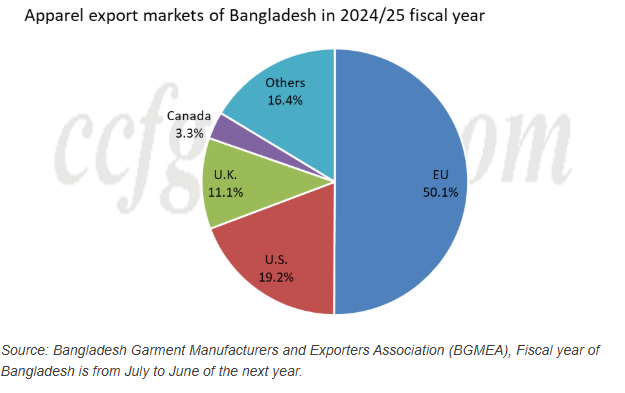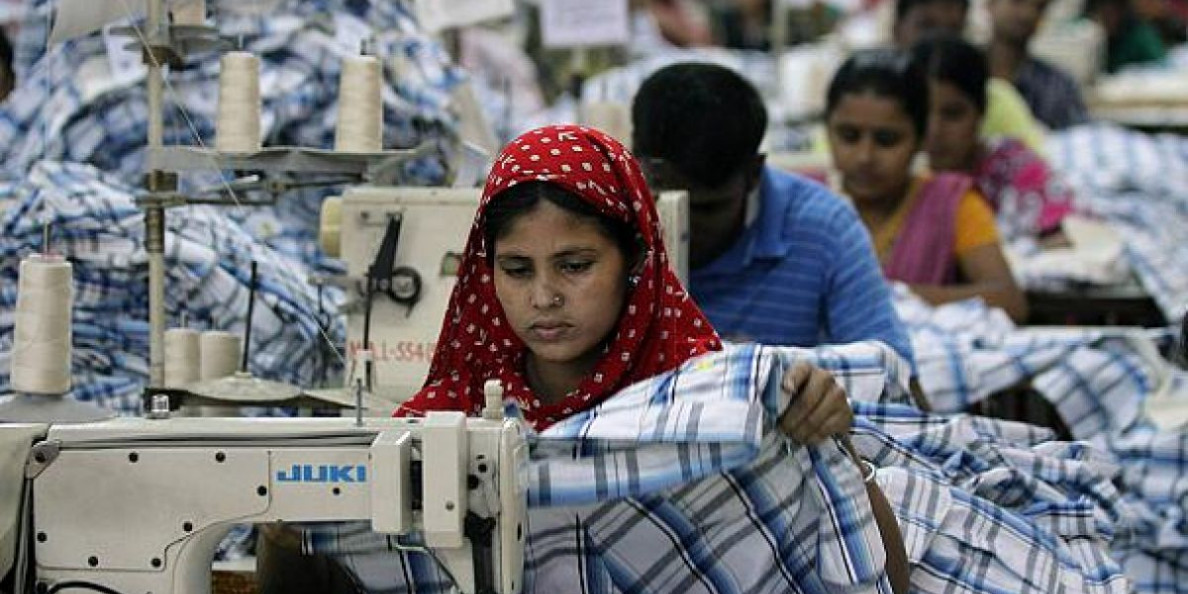After months of negotiations, the United States reached agreements on reciprocal tariff negotiations with most countries on July 31, and the White House released the adjusted reciprocal tariffs. Judging from the final tariffs, Bangladesh saw a significant reduction from the previously stated 35% tariff, while most other major textile and apparel exporting countries were subject to tariffs around 20%.

Note: On August 6, Trump issued a statement stating that because the Indian government imports oil from Russia either directly or indirectly, an additional 25% tariff will be imposed on goods exported from India to the United States. This tariff rate will take effect at 12:01 a.m. (ET), on August 27, applicable to imported goods for consumption, or withdrawn from warehouse for consumption
To secure the preferential tariff treatment, the Ministry of Agriculture of Bangladesh approved a plan to import more wheat, soybeans, oilseeds, pulses, sugar, and barley from the United States. For this purpose, the ministry signed an agreement to import 700,000 tons of wheat from the United States annually. In addition, other ministries agreed to increase imports of Boeing aircraft, liquefied natural gas, and military equipment. The United States further requested an increase in imports of medical equipment, which is still under discussion by the Ministry of Health. In the apparel sector, according to a press conference by the Bangladesh Garment Manufacturers and Exporters Association (BGMEA), the tariff executive order stipulates that if at least 20% of the raw materials (such as U.S. cotton) used in the production of any apparel are from the United States, the additional 20% tariff will not apply to the value of these raw materials. That is to say, the use of U.S. raw materials will enjoy an additional tariff exemption, and 75% of the apparel exported by Bangladesh to the United States is made of cotton.
This is similar to the regulation reported in Vietnam earlier, where using a certain proportion of U.S. cotton in blending can lead to tariff reductions. Both aim to increase imports of U.S. cotton to obtain tariff concessions from the United States. Based on this, some Bangladeshi exporters believe that the proportion of U.S. cotton imports may rise from the current less than 10% to around 20%. Although U.S. cotton is at a price disadvantage compared to cotton from West Africa, Brazil, and India, the policy, if effectively implemented, will be highly attractive to exporters. It is reported that for cotton of the same specification, the basis of U.S. cotton is 6-8cent/lb higher than that of African cotton, 5-7cent/lb higher than Australian cotton, 9-12cent/lb higher than Indian cotton, and about 12cent/lb higher than Brazilian cotton. At the current ICE cotton futures, U.S. cotton is approximately 88-90cent/lb, while Brazilian cotton only costs 76-78cent/lb, with U.S. cotton being about 15% more expensive. However, U.S. cotton has lower spinning loss, usually only 5-10%, compared to 15% for Indian cotton and 12% for West African cotton. Therefore, under the rule of additional tariff exemption, increasing the proportion of U.S. cotton in blending is economically viable.
Compared with the significant growth in Bangladesh's apparel exports to the United States, its imports of U.S. cotton are relatively low. In June, Bangladesh imported 123,300 tons of cotton, with the African Franc Zone being the main source, accounting for 38% of the total imports. Brazil ranked the second place, accounting for 28%, while India and the United States each accounted for 13%. In the first eleven months of this season, cotton imports totaled 1.52 million tons, up 11% from the same period of 2023/24 season. Among them, the African Franc Zone supplied 40% of the total, Australia ranked second with 24%, and Brazil came third with 16%. However, imports of U.S. cotton in the 2024/25 season were less than 110,000 tons, accounting for approximately 7%, which was significantly lower than that of other countries.
For apparel exports, Bangladesh exported $39.347 billion in 2024/25 fiscal year (July 2024 to June 2025). EU accounted for the highest proportion, reaching 50.1%, followed by the United States with 19.18%, the United Kingdom with 11.05%, Canada with 3.31%, and other markets with 16.36%. The export value increased by 8.84% year-on-year, among which the growth rate of exports to the United States was the fastest, reaching 13.8%.

Therefore, once the tariff exemption policy based on the proportion of U.S. cotton is formally implemented, Bangladesh's imports of U.S. cotton are expected to see significant growth. At present, China's policy of imposing additional tariffs on U.S. cotton imports has been extended, and the level of reciprocal tariffs imposed by the United States on China is higher than that on Bangladesh. Against this backdrop, it is foreseeable that in the future, some apparel orders exported to the United States will continue to flow to Bangladesh, and Bangladesh will, to a certain extent, fill the gap in U.S. cotton exports.
Source: ccfgroup.com

